Practical Life Activities in the Prepared Classroom and at Home
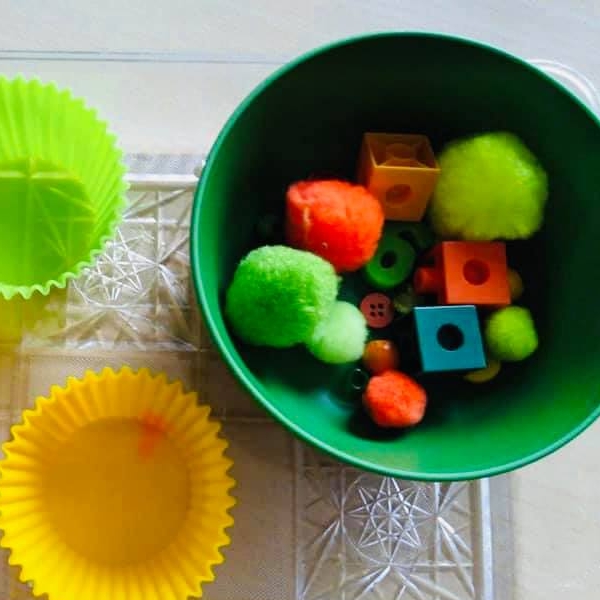
As Fort Mill’s top-rated Montessori school, Village Montessori & Preparatory School prides ourselves on creating a preschool and private kindergarten environment that provides a “whole child” approach to development: cognitive, spiritual, social, emotional and physical.
This development method allows for a dynamic prepared classroom environment that enables children of mixed age groups to explore a myriad of materials with differing levels of difficulty and learn as they are naturally inclined.
Whether in our infant room, preschool classrooms for 1-4 year olds, transitional kindergarten or private kindergarten, we emphasize and teach the whole child approach as developed by Maria Montessori.
In this blog we will be focusing on the Practical Life Area of our prepared classrooms and sharing ideas about how parents can create similar prepared learning environments in your own homes.
Practical Life Activities in the Prepared Classroom
The purpose of the Practical Life Activities in our prepared classrooms is two-fold:
- The prepared activities are meant to assist children in developing social skills and personal independence. Children learn to respect and take care of themselves and their environment and, in doing so, to respect and take care of others.
- The second purpose is to develop a child’s gross and fine motor movement, providing the foundation for every other facet of the learning environment.
Practical Life Activities are designed to encourage competencies in the following categories:
- Preliminary Activities
- Care and Respect for Self
- Care and Respect for the Environment
- Social Grace and Courtesy
- Fine Motor Skills
- Life Skills
All Practical Life Activities are uniquely purposeful and calming, and may appear simple and repetitive. However, if you were to observe a child as they perform such activities, you would notice:
- A high level of concentration - working on an activity for an extended period of time
- A developing sense of order - completing activities methodically from start to finish
- Pride in their work - showing you their completed work and/or demonstrating it for you
- Taking responsibility for any necessary cleaning - putting materials back where they belong in the classroom
- An increasing sense of independence - self-selecting activities and completing them independently
Practical Life Activities at Home
While the introduction to these Practical Life Activities may begin in our preschool and kindergarten classrooms, they are easily replicated at home. We invite you to try some of these fun, easy to set up activities and encourage your children to continue building their practical life activities in your own environment.
The following activities will help children work on their fine motor skills, color and shape recognition, and stimulate their senses:
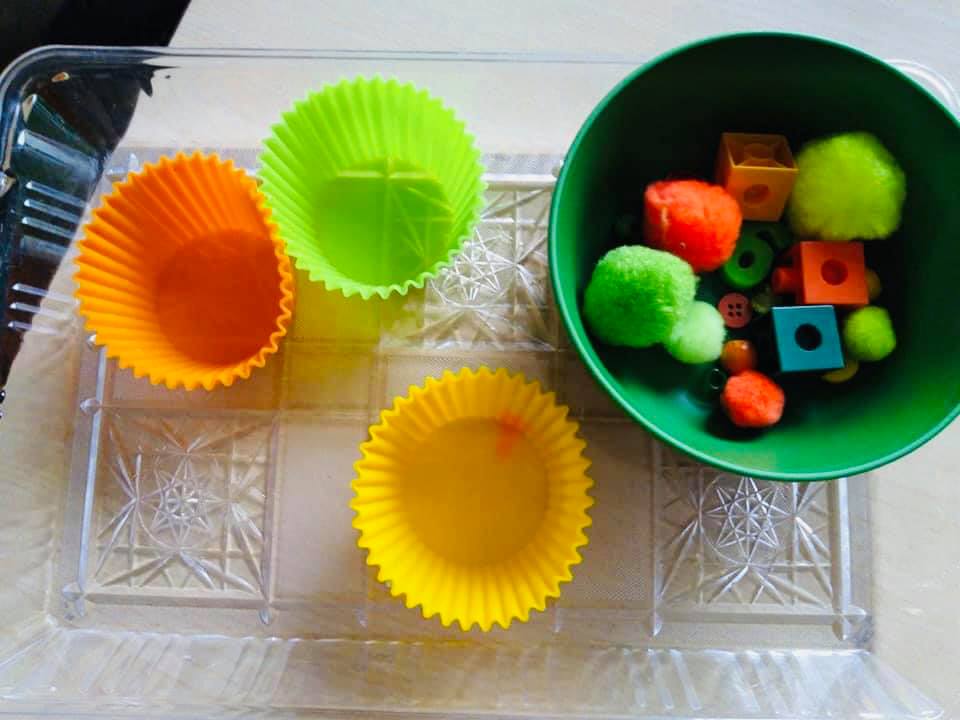 Sorting: Gather small cupcake liners, cups or bowls in a few colors. In a larger bowl, add a variety of small toys, balls, art supplies, etc. that match those same colors. Encourage your child to sort the items into the matching colored cupcake liner, etc.
Sorting: Gather small cupcake liners, cups or bowls in a few colors. In a larger bowl, add a variety of small toys, balls, art supplies, etc. that match those same colors. Encourage your child to sort the items into the matching colored cupcake liner, etc.
T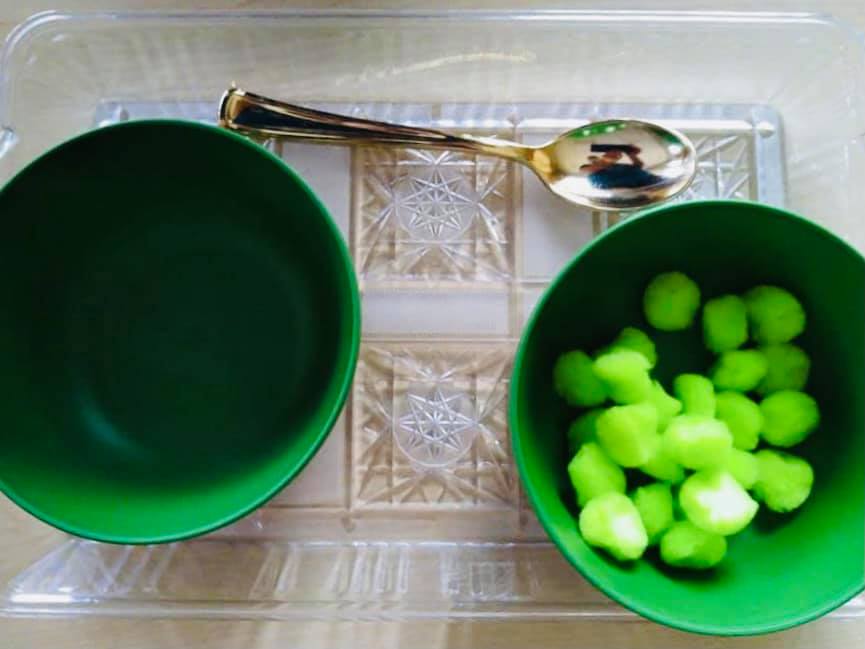 ransferring: Get two small bowls or containers. Add beads, puff balls, any small items easy to scoop with a spoon. Encourage your child to transfer the items using the spoon from one bowl to the other. You can also do this activity with small tongs.
ransferring: Get two small bowls or containers. Add beads, puff balls, any small items easy to scoop with a spoon. Encourage your child to transfer the items using the spoon from one bowl to the other. You can also do this activity with small tongs.
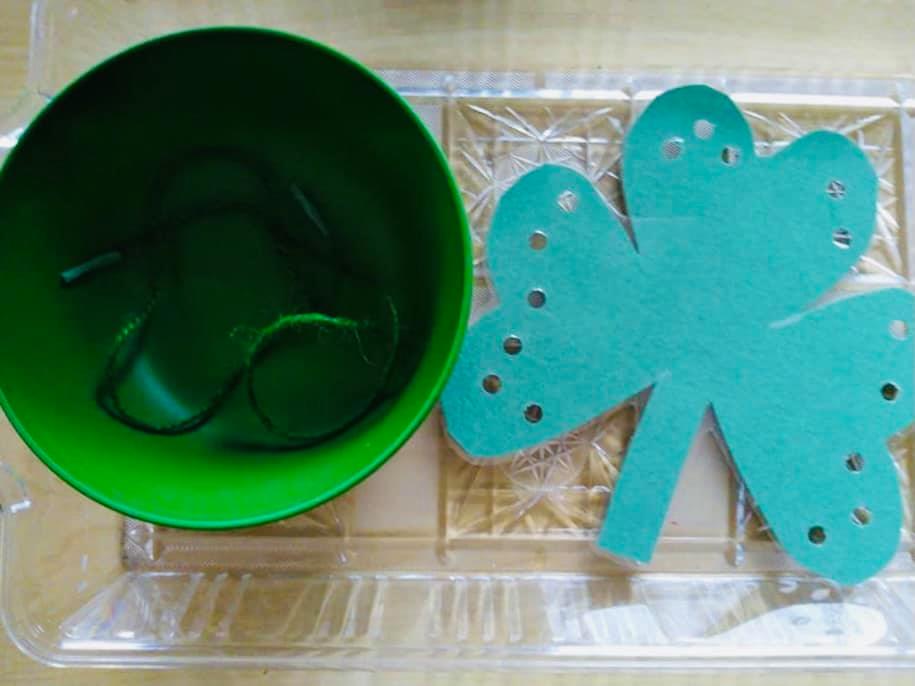 Lacing: Cut out a shamrock, or another fun shape such as a heart, circle, or square, and punch holes around the perimeter. Provide a shoelace or ribbon for your child and show them how to lace/weave the shoelace in and out of the punched holes.
Lacing: Cut out a shamrock, or another fun shape such as a heart, circle, or square, and punch holes around the perimeter. Provide a shoelace or ribbon for your child and show them how to lace/weave the shoelace in and out of the punched holes.
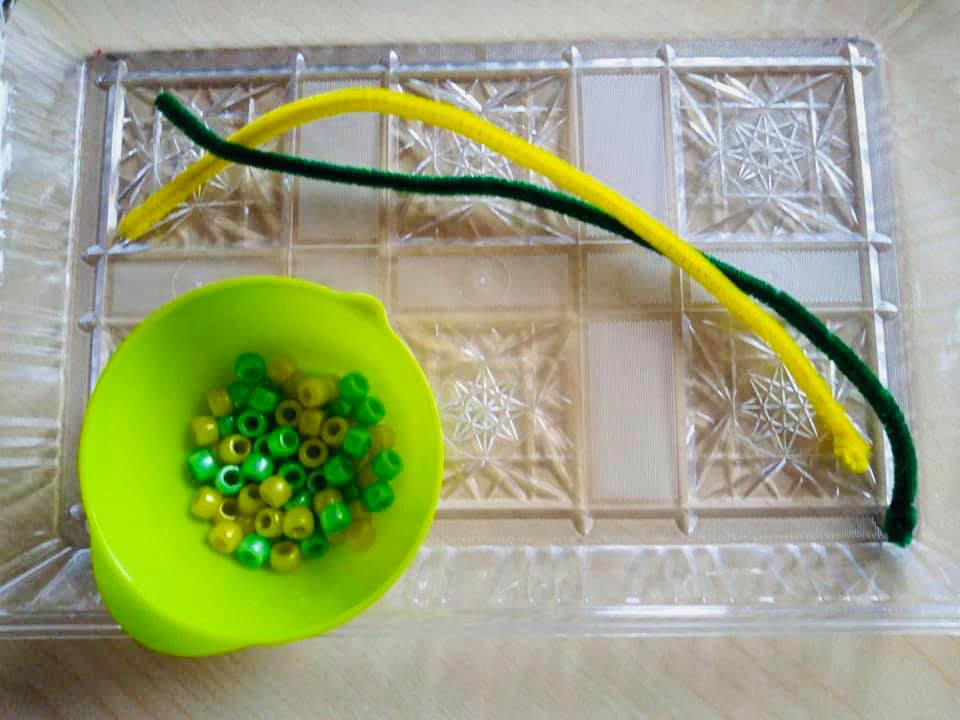 Bead Work: Add small beads in a variety of colors to a small bowl. Provide your child with a few pipe cleaners. Show them how to thread the pipe cleaner through the beads to create a pattern, a bracelet or a necklace. They can repeat the activity over and over again creating different patterns with the beads.
Bead Work: Add small beads in a variety of colors to a small bowl. Provide your child with a few pipe cleaners. Show them how to thread the pipe cleaner through the beads to create a pattern, a bracelet or a necklace. They can repeat the activity over and over again creating different patterns with the beads.
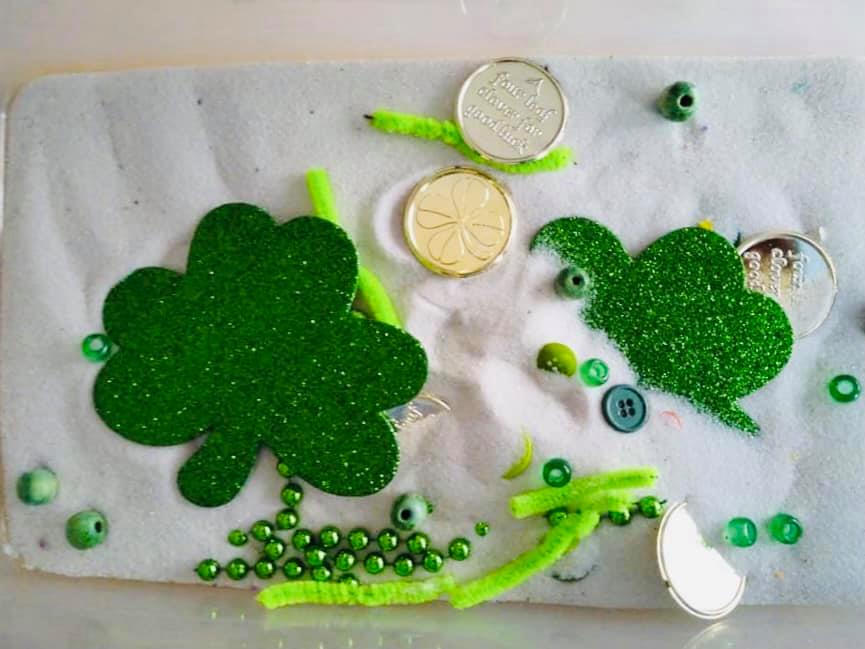 Sensory Bins: In a large bowl or plastic storage container add rice, beans, or sand (if you are brave!) and a variety of themed items such as small toys, plastic coins, buttons, beads, figurines, etc. Invite your child to find the items, scoop them out into smaller containers, arrange them in patterns, sort them, etc.
Sensory Bins: In a large bowl or plastic storage container add rice, beans, or sand (if you are brave!) and a variety of themed items such as small toys, plastic coins, buttons, beads, figurines, etc. Invite your child to find the items, scoop them out into smaller containers, arrange them in patterns, sort them, etc.
We hope you enjoy these ideas and creative ways to stimulate your child’s senses and fine motor skills at home!
To learn more about our Prepared Classrooms and Montessori Curriculum, we invite you to Schedule a Tour to visit our Fort Mill, SC location. We would love the opportunity to show you our school in motion!
